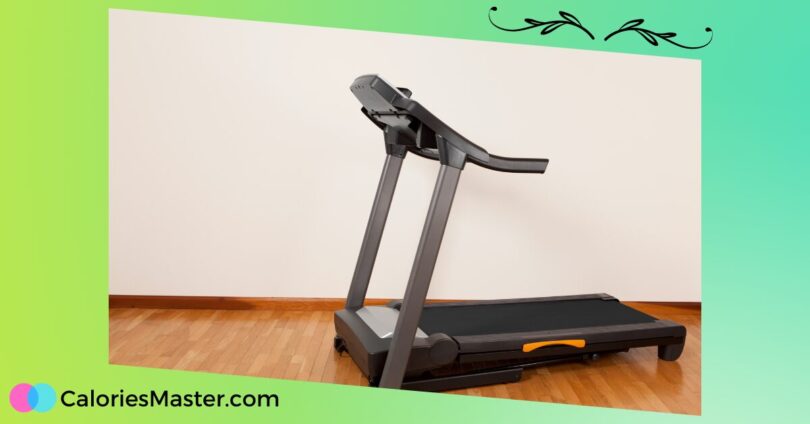If you’re looking to purchase a treadmill, one of the things you should consider is its weight. The average weight of a treadmill can vary greatly depending on factors such as its size, motor, and features. Knowing the average weight of a treadmill can help you determine if it’s suitable for your home gym and whether you’ll need help moving it.
According to a search of various fitness websites, the average weight of a treadmill is around 200-250 pounds for a standard electric model.
However, there are some treadmills that can weigh as little as 100 pounds or as much as 500 pounds. Commercial treadmills tend to be heavier, weighing between 250 and 400 pounds on average. The weight of a treadmill can also depend on whether it’s manual or electric, with manual treadmills generally being lighter than electric ones.
Standard Treadmill Weight Ranges
When it comes to treadmills, weight is an important factor to consider. The weight of a treadmill can affect its stability, portability, and durability. The average weight of a standard treadmill ranges from 200 to 250 pounds [1].
However, there are lighter and heavier models available on the market, depending on your needs and preferences.
Light Treadmills
If you are looking for a lightweight treadmill that is easy to move around, a manual treadmill may be a good option for you. Manual treadmills are lighter than electric treadmills, weighing around 60-100 pounds [2].
They do not have a motor, so you will have to power the belt with your own movement. This can be a good way to burn more calories and improve your fitness level.
Heavy Treadmills
On the other hand, if you are looking for a heavy-duty treadmill that can withstand frequent use and high-intensity workouts, a commercial treadmill may be a better choice for you.
Commercial treadmills can weigh around 250 to 400 pounds [3]. They have a more powerful motor and a larger running surface, which makes them suitable for gym environments and serious athletes.
Factors that Affect Weight
The weight of a treadmill can vary depending on several factors, such as the motor, incline adjustment, and folding deck. A stronger motor is usually much heavier than a weaker one, and a treadmill with a steeper incline can be heavier than a flat one.
Additionally, a treadmill with a folding deck may be lighter than a non-folding one, but it may sacrifice stability and durability.
Overall, the weight of a treadmill is an important consideration when choosing the right model for your needs. Whether you prefer a light or heavy treadmill, make sure to check the weight specifications before making a purchase.
[1] Source: https://homegymmag.com/treadmills-average-weight/ [2] Source: https://www.runnersgoal.com/how-much-does-a-treadmill-weigh/ [3] Source: https://homegymmag.com/treadmills-average-weight/
Factors Influencing Treadmill Weight
When it comes to buying a treadmill, the weight of the machine is an important consideration. Not only does it affect the transportation and installation of the treadmill, but it can also impact the machine’s durability, stability, and user capacity.
Here are some of the main factors that influence the weight of a treadmill.
Material and Build Quality
One of the most significant factors that affect the weight of a treadmill is the material and build quality of the machine. The frame and deck of the treadmill can be made of various materials, including steel, aluminium, and composite materials.
Generally, heavier materials like steel are stronger and more durable, but they also add to the weight of the machine. Additionally, the quality of the assembly and construction can also impact the weight of the treadmill.
Size and Dimensions
The size and dimensions of the treadmill also play a role in determining its weight. Larger treadmills with wider decks and longer frames will typically weigh more than smaller models.
Additionally, treadmills with incline features or folding mechanisms may also contribute to their weight. However, compact and lightweight treadmills may be less sturdy and have lower weight capacities.
Motor and Mechanism Complexity
The motor and mechanism complexity of the treadmill can also affect its weight. Treadmills with more powerful motors or advanced features like shock absorption systems or heart rate monitors may weigh more than simpler models. Additionally, treadmills with more moving parts or complex mechanisms may require more materials and assembly, adding to their weight.
Overall, the weight of a treadmill is influenced by a combination of factors, including material and build quality, size and dimensions, and motor and mechanism complexity. It’s important to consider these factors when choosing a treadmill to ensure that you select a machine that meets your needs and fits your space and budget.
Treadmill Weight and Portability
When it comes to purchasing a treadmill, one of the most important factors to consider is its weight. The weight of a treadmill can vary greatly depending on its size, motor, and features. Generally, treadmills weigh between 50 to 450 pounds [1].
If you plan on moving your treadmill regularly, it’s important to consider its weight and portability. Lighter treadmills are easier to move around, but may not be as sturdy as heavier models. Manual treadmills are generally lighter than motorized ones, but they require more effort to use.
If you have limited space in your home gym or plan on storing your treadmill after each use, a foldable treadmill may be a good option. These treadmills are designed to be easily folded and stored away when not in use. However, it’s important to note that foldable treadmills may not be as sturdy as non-foldable models.
Here are a few tips to consider when it comes to treadmill weight and portability:
- Consider the weight of the treadmill before purchasing it. If you plan on moving your treadmill around frequently, opt for a lighter model.
- If you have limited space in your home gym, consider a foldable treadmill.
- Keep in mind that lighter treadmills may not be as sturdy as heavier models.
- If you’re unsure about the weight and portability of a particular treadmill, read reviews and ask for recommendations from fitness professionals.
Overall, the weight of a treadmill is an important factor to consider when purchasing one for your home gym. By taking into account your needs and preferences, you can choose a treadmill that is both sturdy and easy to move around when necessary.
[1]: https://treadmilldash.com/how-much-does-a-treadmill-weigh/
Impact of Weight on Treadmill Performance
When it comes to treadmills, weight plays a significant role in determining the performance of the machine. In this section, we will discuss how weight affects the stability, durability, vibration, and noise control of the treadmill.
Stability and Durability
The weight of a treadmill is directly proportional to its stability and durability. A heavier treadmill is more stable and durable than a lighter one. This is because the added weight helps to keep the treadmill in place, preventing it from moving or wobbling during use.
Additionally, the added weight also makes the treadmill more resistant to wear and tear, which means it will last longer.
Vibration and Noise Control
The weight of a treadmill can also impact its vibration and noise control. A heavier treadmill is less likely to vibrate or produce noise during use, as the added weight helps to absorb the shock and reduce the vibrations. This is especially important for people who live in apartments or have neighbours who are sensitive to noise.
To summarise, a heavier treadmill is generally better in terms of stability, durability, and vibration and noise control. However, it is important to note that weight is not the only factor that determines the performance of a treadmill. Other factors such as the motor, build quality, and features also play a significant role.
Average Weight Comparison by Treadmill Type
When it comes to buying a treadmill, weight is an important factor to consider. The weight of the treadmill can affect its stability, durability, and ease of transportation. In this section, we will compare the average weight of different types of treadmills.
Manual Treadmills
Manual treadmills are powered by the user’s movement. They are generally lighter and more compact than motorized treadmills. The average weight of a manual treadmill is around 60-100 pounds. However, some manual treadmills can be heavier than electric treadmills depending on the brand and model.
Motorised Treadmills
Motorized treadmills are powered by a motor. They are generally heavier than manual treadmills due to the motor and other features. The average weight of a motorized treadmill is around 200-250 pounds.
However, some high-end electric treadmills for home use can weigh over 300 lbs. The weight of the motor is a significant factor in the weight difference between motorized treadmills.
Commercial vs Home Use Treadmills
Commercial treadmills are designed for heavy usage in gyms and fitness centres. They are generally heavier and more durable than home use treadmills. The average weight of a commercial treadmill is around 250 to 400 pounds.
On the other hand, home use treadmills are lighter and more compact than commercial treadmills. The average weight of a standard home use treadmill is around 200 to 250 pounds.
In conclusion, the weight of a treadmill can vary significantly depending on the type of treadmill. Manual treadmills are lighter and more compact than motorized treadmills, while commercial treadmills are heavier and more durable than home use treadmills. When choosing a treadmill, consider the weight as an important factor in your decision-making process.









